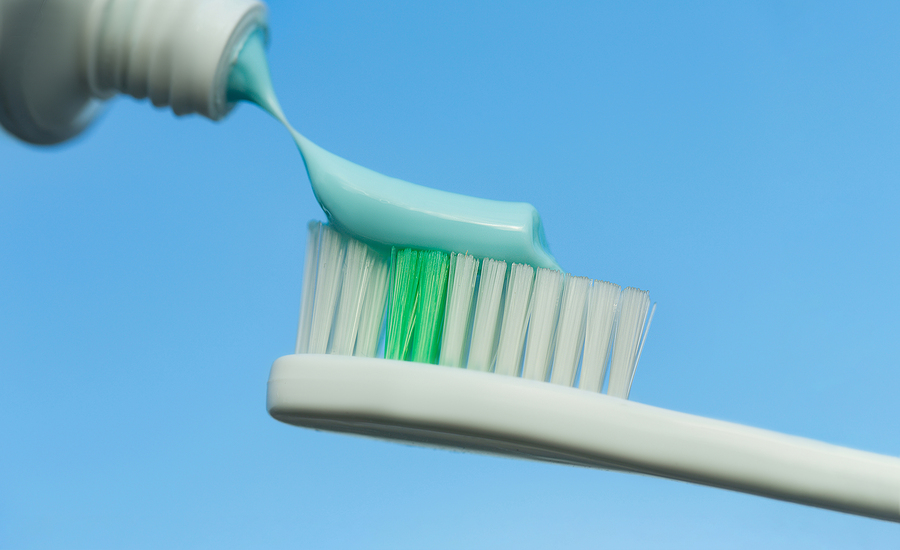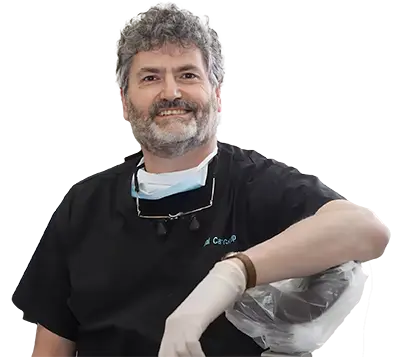How much toothpaste do you put on your toothbrush?
Chances are, you probably use an amount similar to the photo above, or possibly even more than that, covering your toothbrush with a thick layer of toothpaste. After all, that’s what’s shown on the box and the TV ads.
Here’s the thing, though – you really don’t need that much toothpaste.
In fact, most of us are actually using far too much of the stuff!
If you ask us, less is more when it comes to keeping your pearly whites sparkling clean.
So, how much toothpaste should you be using, and how much is too much? What are the risks of using too much toothpaste? Our dentist in Armadale explains.
How much toothpaste you SHOULD be using
Our dentist in Armadale generally recommends using no more than a pea-sized blob of toothpaste when brushing.
Unless you get advice from a dental professional to the contrary, a pea-sized amount of toothpaste should suffice.
The idea that we should be using big globs of toothpaste is largely a fiction, created by toothpaste advertising campaigns. All the ads and boxes demonstrate long ribbons of toothpaste that cover the entirety of your toothbrush.
Over time, people simply started assuming that this was the ideal amount of toothpaste.
As a result, most Aussies are using far too much toothpaste in the morning and evening.
How did we get to this point?
The answer is simple: to sell more toothpaste!
Think about it this way: if you’re using more toothpaste than you actually need, that means you’re finishing your tube of toothpaste quicker.
And that directly translates to buying new toothpaste more frequently, and therefore more sales and money for toothpaste brands!
How about children?
A pea-shaped amount of toothpaste is the recommended amount for adults. But what about children?
As anybody with kids knows, children have special requirements, as their bodies are still actively growing and developing. They can’t take an adult dosage of medicine for example, and have particular dietary requirements to ensure optimal development.
These unique requirements also extend to their oral hygiene.
That’s because young teeth are particularly vulnerable to fluoride overdoses, which in turn can result in fluorosis (more on that below).
So, how much toothpaste should you be giving your little ones? Well, that depends on their age…
- Up to three years: a rice-grain sized amount of toothpaste
- 3+ years: a pea-shaped amount of toothpaste
Another piece of advice is to be careful when buying toothpaste for children.
Many brands advertise special formulations for children – however, there’s no universal standard, so you’ll want to check the box.
The fluoride content of toothpaste is measured in ppm (parts per million – this can also be expressed as milligrams per litre).
Most types of children’s toothpaste can come in anywhere between 500 and 1000ppm. For reference, adult toothpaste comes in at around 1000 to 1400ppm.
The reason there’s such a huge range is because toothpaste manufacturers know that most parents apply excessive amounts of toothpaste (thus continuing the cycle). Thus, the potency of children’s is reduced to compensate.
If you ask our dentist in Armadale however, most children shouldn’t be using toothpaste with less than 1000ppm (applied in the correct amount, of course) – in fact, New Zealand health authorities explicitly advise against this.
When buying toothpaste for your children, be sure to carefully check the fluoride levels. And of course, ensure that you use a suitable amount!
Unsure? Give your local family dentist a call.

The problem with excessive toothpaste
The truth of the matter is that using too much toothpaste may actually lead to negative health consequences!
That’s because toothpaste is packed with fluoride, a substance that helps strengthen your teeth (in particular, the enamel layer) and thereby prevent tooth decay.
However, it’s possible to have too much of a good thing!
Younger children whose adult teeth are still developing may even develop what we call dental fluorosis (AKA mottled enamel).
During the period when adult teeth are still erupting, the enamel is susceptible to fluoride overload. This results in a degree of discolouration:
- Mild fluorosis – subtle white spots or uneven areas where the enamel has worn out
- Moderate fluorosis – white patches evolve into visible yellow-brown patches
- Severe fluorosis – prominent brown patches, as well as “pits” that give the appearance of cavities and tooth decay
Another, less-obvious side-effect of fluorosis is a higher risk of tooth decay.
That’s because one of the symptoms of fluorosis is uneven tooth surface, caused by excessive fluoride. This leaves plenty of tiny, almost invisible valleys and for bacteria and the like to take hold.
This also makes it harder for your trusty toothbrush to properly clean the surface of your teeth, as smooth surfaces are easier to clean than rough or uneven ones.
Treating fluorosis
Unfortunately, fluorosis is permanent – once you’ve got it, it’s never going to go away. In fact, teeth may even darken over time.
Thankfully, there are a couple of options for treatment:
- Dental veneers and crowns
- Composite resins
- Teeth whitening procedures
Unsure? Talk to a dentist in Armadale!
When it comes to your oral health, you can never be too safe. If you’re unsure about any part of your oral health routine, don’t risk it – get in touch with a dental professional (especially if you’re overdue for a check-up!)
In addition to high-end cosmetic dentistry, our dentists in Armadale can also advise you about how to best look after your dental hygiene.
Ask us any questions you have, whether it’s about brushing technique, brush type or toothpaste – we’ll provide you the right guidance.
Our experienced dental team will evaluate the health of your mouth, identify potential problems and prescribe the right solution!
Book in with our dentist in Armadale today – give us a call on (03) 9509 1500, or click here to book online.

